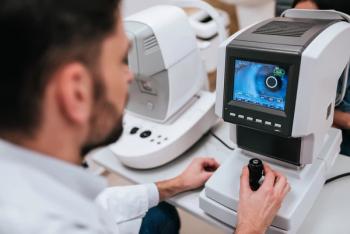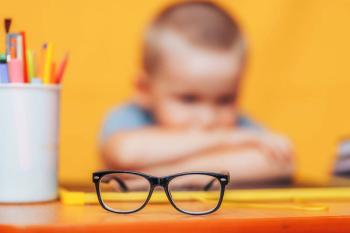Patricia Buehler, MD, MPH, is looking to reform blepharoplasty by reducing surgery time, recovery, and bruising by using a noninvasive approach. At ASCRS, Buehler shared a bit of background on her discovery of a new surgical technique and subsequent device development.
A game-changer in blepharoplasty
Key takeaways for optometrists:
- Ziplyft offers a minimally invasive alternative to traditional blepharoplasty—no cautery, no sutures, less bruising.
- Faster procedure time (under 10 minutes) makes it an efficient option for busy surgical practices.
- Pilot study data suggests high patient satisfaction and improved surgeon experience.
- Commercial and academic recognition signal strong potential for broader adoption.
During a visit to an exhibit on ancient Egyptian medicine, Buehler found unexpected inspiration. The exhibit showcased a method of removing excess skin using compression—twigs tied tightly to cut off blood supply, causing the skin to fall off naturally. That concept, still used in procedures like circumcision, sparked an idea that evolved into the Ziplyft, a patented device that is now changing how upper eyelid blepharoplasty is performed.
The Ziplyft device employs compression skin contouring to remove excess eyelid skin without cautery or sutures. This technique dramatically simplifies the surgical process, making it both faster and less invasive. “Instead of a 45 to 60-minute procedure, it can now be completed in less than 10 minutes,” Buehler notes.
A major innovation in Ziplyft is the inclusion of a surgical guide, which ensures greater symmetry and consistency—something often difficult to achieve in traditional, freehand blepharoplasty.
Better for patients, easier for surgeons
For patients, the benefits are clear:
- Minimal bruising
- No sutures or cautery
- Faster recovery time
- More natural-looking results
Surgeons involved in the current pilot study report that the Ziplyft technique not only reduces operative time by up to two-thirds but also alleviates the tedious steps typically involved in the procedure. With reduced patient downtime and higher satisfaction, the appeal to both providers and patients is significant.
From kitchen table to operating room
The development of the Ziplyft device began during the COVID-19 pandemic. With elective procedures on hold, the inventor and her husband, an orthopedic surgeon, began prototyping in their kitchen using chicken skin. This was followed by trials on 60 cadavers before moving into clinical use. As of now, 84 patients have undergone blepharoplasty using Ziplyft, and 4 surgeons are actively trained in its use.
Industry recognition and future outlook
The innovation has not gone unnoticed. At ASCRS 2023, the company won the Winning Pitch award for best early-stage company—marking the first time a female-founded company took the prize. The following year, they received the People’s Choice Award at Eyecelerator, further validating the device’s potential.









































